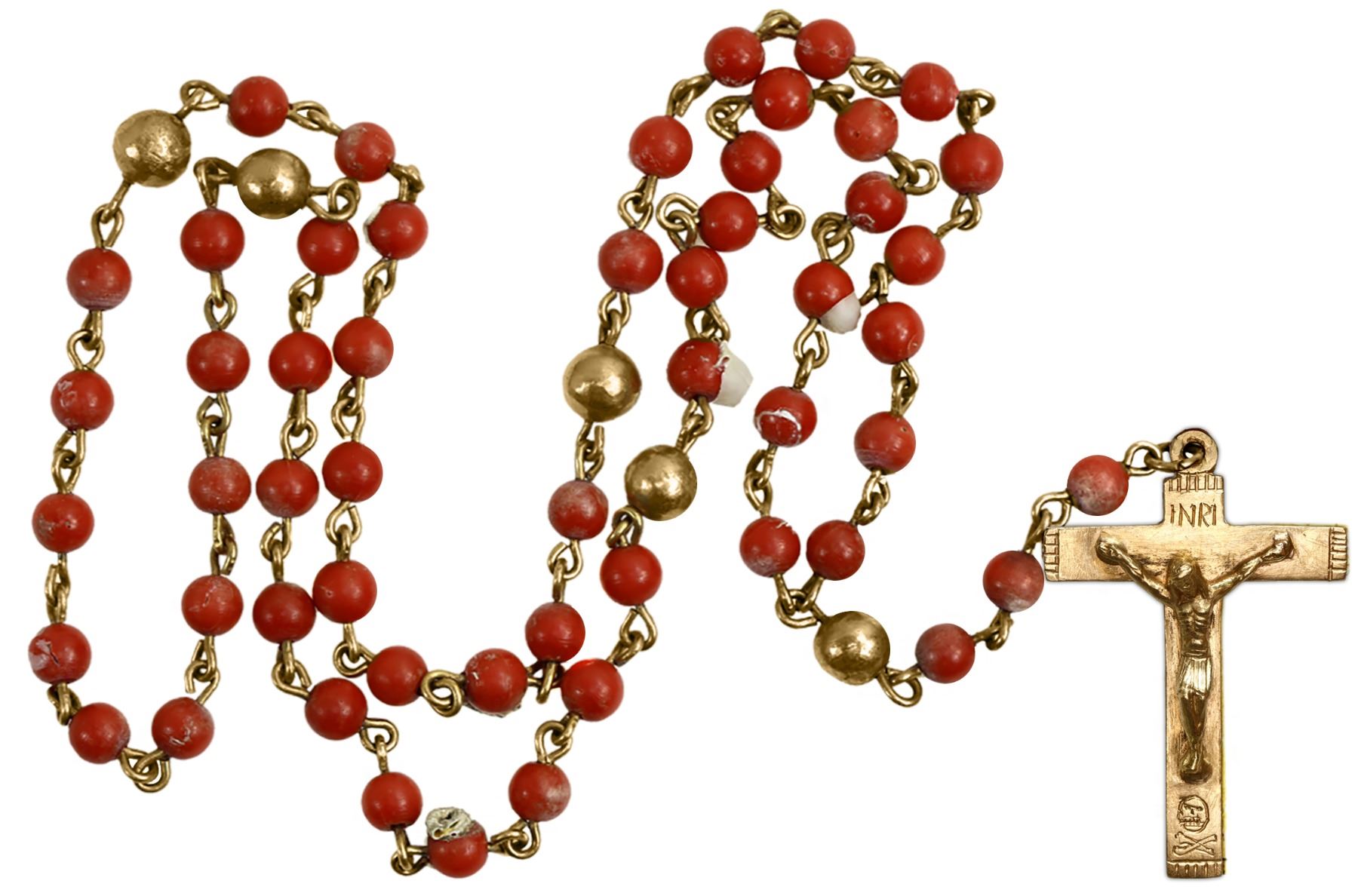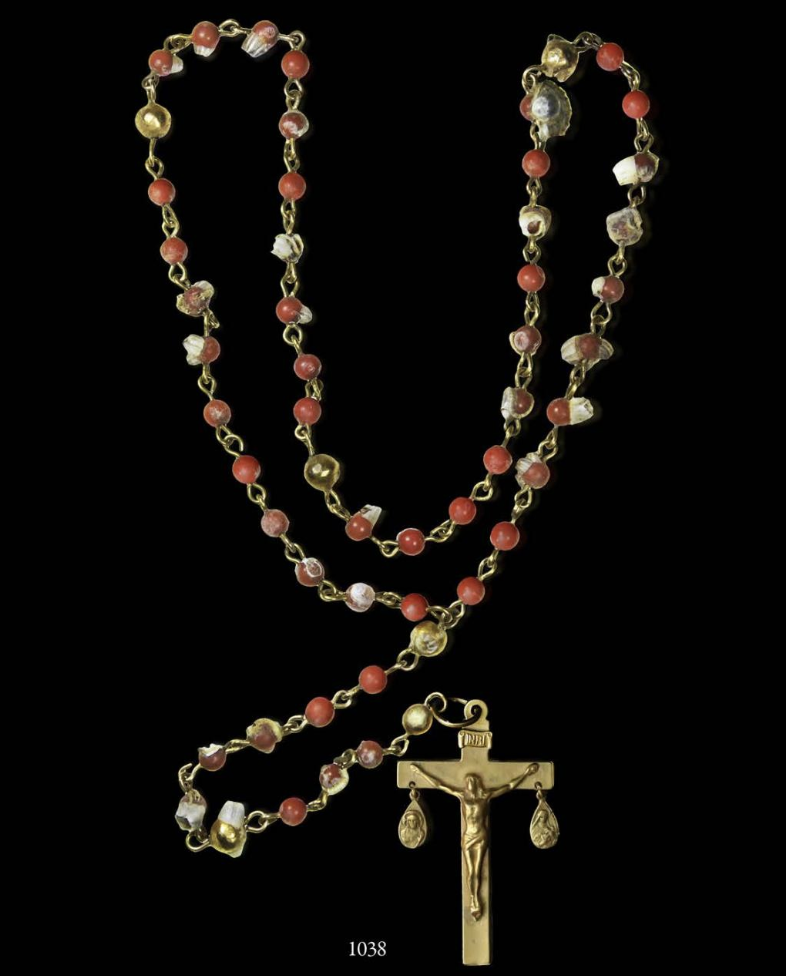Our Treasure of the Month for February is this intact gold and red-coral rosary (beach find) from the 1715 Fleet. Intact rosaries are quite rare, as the delicate chain parts often separated. Measuring 34” long and weighing 56.08 grams this item is a most impressive religious artifact. Most notably, all the coral and gold beads are intact (a few with small barnacles attached). Our featured item has 53 beads in all, which represent five “decades” around the neck and 3 beads down to the cross. Each decade provides an opportunity to meditate on one of the Mysteries of the Rosary, which recall events in the lives of Jesus and his mother Mary. There are 5 gold beads that separate each decade. Known as “paternosters” these beads designate the Lord’s Prayer (“Our Father”).
Along with the beads is a crucifix. The crucifix is a principal symbol for many groups of Christians and is especially important in the Catholic Church. Our crucifix here is 1 ¾ “ flat cross surmounted with a separately cast figure of Christ. Above the Christ figure is the initialism “INRI”, which in English translates to “Jesue the Nazarene, King of the Jews”. At the feet is the skull and crossbones of Golgotha signifying the bones of Adam. The backside of the cross is plain with an integrated loop at the top.
Red coral was a popular constituent of rosaries as it was believed that it would protect one against magic spells. This belief goes back to Greek mythology that gave red coral’s origin as “the spurts of blood that gushed forth when Medusa’s head was cut off by Perseus”.
Our specimen is very similar to a rosary that was part of the same beach find. It was previously offered as Lot 1038 in Sedwick Auction 16. (See below)
Notice the similarities between the two rosaries. Both have the same gold and coral beads, some with attached barnacles. Our rosary measure 34” long. This one is 27”. The most significant difference can be seen by comparing the respective crucifixes. This crucifix has two tiny medallions suspended at each end of the cross below the outstretched hands of the crucified Christ. A most unusual feature.
One can almost imagine the frantic occupants of the 1715 Fleet desperately praying for God’s intervention as the ships they occupied were dashed, one by one, on the reefs off the east coast of Florida on July 31, 1715. Maybe our rosary was one held by a doomed passenger. Perhaps realizing that prayers would not save them this time, the gold and coral rosary was returned to its hiding place as the owner awaited their fate. Then, hundreds of years later, that same rosary would be recovered to suggest a tale of despair of its unhappy former owner.
For more information about Fleet related rosaries see our Treasure of the Month for August 2014, September 2017 and September 2021.
Many thanks to Daniel Frank Sedwick, LLC for providing most of the information (with a few exceptions) that went into the text for this post as well as the images. We always appreciate the help and support offered by Dan Sedwick and his staff.

